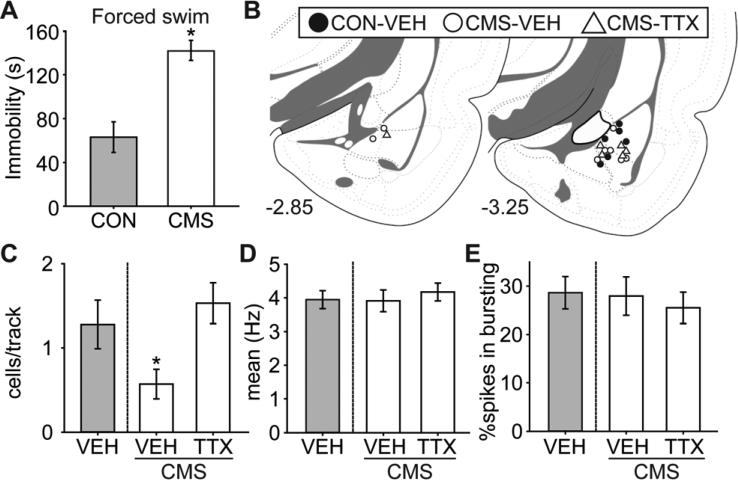Figure 4.
Rats that underwent the CMS procedure developed deficits in the forced swim test, which has been associated with despair-like behavior, and there was a significant decrease in VTA DA neuron population activity that was restored by attenuating BLA activity. (A) CMS rats (n = 16) exhibited more time spent in immobility compared to controls (CON; n = 8) in the forced swim test (*, p < 0.05). CMS rats were then divided into two groups matched for forced swim behavior (n = 8 each), and received local BLA infusion of tetrodotoxin (TTX) or vehicle (VEH; CON and CMS) immediately before DA recordings. (B) Cannulae placements for all rats included in this study. (C) DA neuron population activity in CMS rats (VEH, white bar; n = 8, 41 neurons) was significantly lower than CON rats (VEH, gray bar; n = 6, 69 neurons) (*, p < 0.05), which was restored to control level by attenuating BLA activity with TTX (n = 6, 81 neurons) infusion. There was no significant difference among groups in (D) mean firing rates or (E) bursting activity. Coronal brain section images in (B) adapted from Swanson (52).

